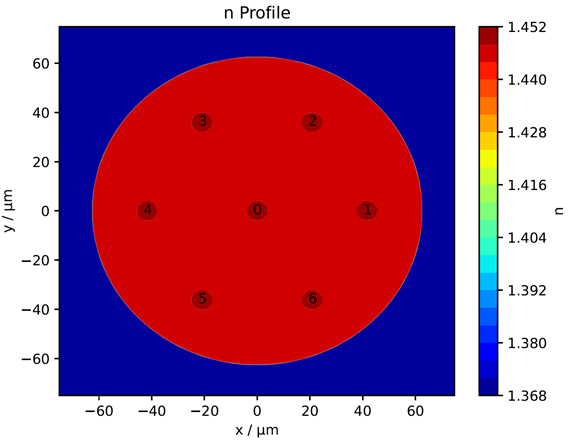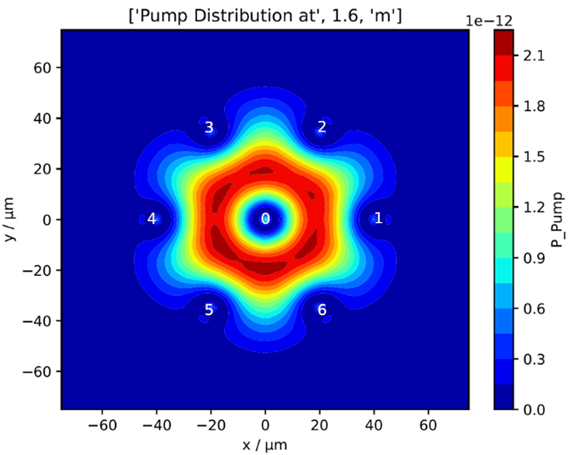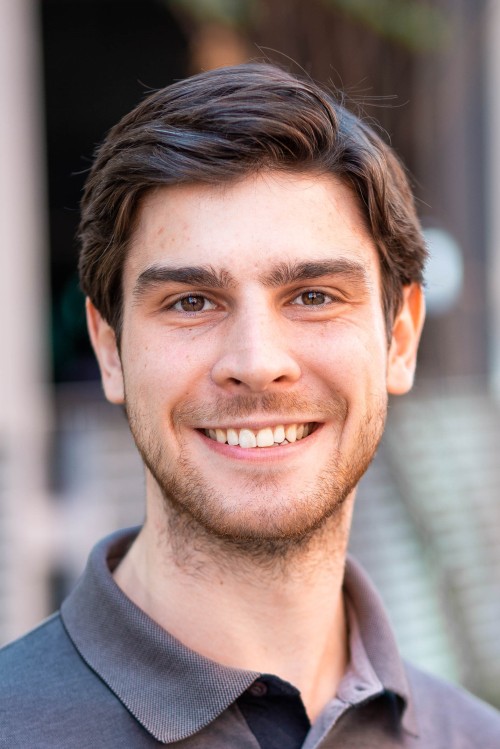Optical Communications Laboratory
 Refractive index profile of a 7-core fiber
Refractive index profile of a 7-core fiber
 Simulated pump field (clad pumping)
Simulated pump field (clad pumping)
The data traffic is increasing exponentially ever since and there is no stagnation in sight. The most important part of today’s global network are optical communication systems based on optical fiber. By now a multitude of multiplexing techniques like Amplitude-, Phase-, Wavelength- and Polarization-Multiplexing are used to increase data rates on every data link. Even when using all of these multiplexing techniques, the interaction of light with the optical fiber results in the Shannon Limit, which will prevent the further development and lead to the capacity crunch of a fiber link. The last remaining option to increase the data rate is space division multiplexing (SDM). This can be realized in different ways, e.g. Few-Mode-Fibers or Multicore-Fibers.
At the LHFT in our Optical Communications Laboratory we do research on all of the mentioned Multiplexing Techniques. In our project „MultiCap“ we are developing Raman- and Erbium-doped-Fiber-Amplifiers in a Multicore-Fiber setup for SDM.
Contact:
Benedikt Beck, M. Sc.
- Phone number: +49 9131 85-27216
- Email: benedikt.beck@fau.de
